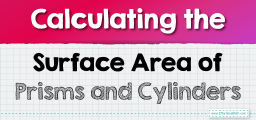What are the Similarity Criteria? Exploring the Fundamentals of Shape Proportions in Geometry
Geometry, at its core, is a beautiful dance between shapes, sizes, and spatial reasoning. While it may seem overwhelming at first, a deeper dive into its concepts reveals intricate patterns and relationships. One of these fundamental concepts is the "Similarity Criteria". It governs the relationships between two geometric shapes, specifically when they have the same shape but not necessarily the same size. In this blog post, we'll uncover the mathematics behind similar figures, delve into the similarity criteria, and see how they're applied in practical scenarios.

Step-by-step Guide: Similarity Criteria
Definition of Similar Figures:
Two figures are said to be similar if their corresponding angles are congruent and their corresponding sides are proportional. Essentially, similar figures look alike but may be of different sizes.
- For triangles, if two triangles are similar, then their corresponding angles are equal, and their corresponding sides are in proportion.
Criteria for Similarity in Triangles:
a. Angle-Angle-Angle (AAA): If in two triangles, corresponding angles are equal, then their corresponding sides are in proportion and thus the triangles are similar.
b. Side-Angle-Side (SAS): If one angle of a triangle is equal to one angle of another triangle and the sides including these angles are proportional, then the triangles are similar.
c. Side-Side-Side (SSS): If the corresponding sides of two triangles are in proportion, then the triangles are similar.
Scale Factor:
The ratio of the lengths of corresponding sides of two similar figures is called the scale factor. For instance, if two similar triangles have corresponding sides of lengths \(AB\) and \(DE\), the scale factor is given by the ratio \( \frac{AB}{DE} \).
Examples
Example 1:
Triangle \(ABC\) has sides of lengths \(4 \text{ cm}\), \(5 \text{ cm}\), and \(6 \text{ cm}\). Triangle \(DEF\) has sides of lengths \(8 \text{ cm}\), \(10 \text{ cm}\), and \(12 \text{ cm}\). Are the triangles similar?
Solution:
Comparing the sides of triangles \(ABC\) and \(DEF\):
\( \frac{AB}{DE} = \frac{4 \text{ cm}}{8 \text{ cm}} = 0.5 \), \( \frac{BC}{EF} = \frac{5 \text{ cm}}{10 \text{ cm}} = 0.5 \), \( \frac{CA}{FD} = \frac{6 \text{ cm}}{12 \text{ cm}} = 0.5 \)
Since the ratios are the same, according to the SSS criterion, triangles \( ABC\) and \( DEF\) are similar with a scale factor of \( 0.5\).
Example 2:
Triangle \( PQR\) and triangle \( STU\) have angles measuring \(50^\circ\), \(60^\circ\), and \(70^\circ\). Are these triangles similar?
Solution:
Both triangles have corresponding angles that are equal. According to the AAA criterion, the triangles are similar.
Practice Questions
- Triangle GHI has sides of lengths \(7 \text{ cm}\), \(24 \text{ cm}\), and \(25 \text{ cm}\). Triangle \(JKL\) has sides of lengths \(14 \text{ cm}\), \(48 \text{ cm}\), and \(50 \text{ cm}\). Are the triangles similar?
- Triangle \(MNO\) has angles measuring \(35^\circ\), \(55^\circ\), and \(90^\circ\). Triangle \(PQR\) has angles measuring \(55^\circ\), \(90^\circ\), and \(35^\circ\). Are these triangles similar?

Answers:
- Yes, triangles \(GHI\) and \(JKL\) are similar according to the SSS criterion with a scale factor of \(0.5\).
- Yes, triangles \(MNO\) and \(PQR\) are similar according to the AAA criterion.
Related to This Article
More math articles
- 5th Grade WY-TOPP Math Worksheets: FREE & Printable
- Using Models to Represent Decimal Number Place Value
- Using Strip Diagrams to Represent Fractions
- Top 10 Trigonometry Books: A Comprehensive Guide for Students and Teachers (Our 2024 Favorite Picks)
- 8th Grade Common Core Math Worksheets: FREE & Printable
- How to Use Partial Products to Multiply Two-Digit Numbers By Two-digit Numbers
- How to Solve Word Problems of Elapsed Time
- Top 10 Tips to Overcome TExES Core Subjects Math Anxiety
- 5th Grade NYSE Math Practice Test Questions
- Top 20 Math Websites for Virtual Learning












What people say about "What are the Similarity Criteria? Exploring the Fundamentals of Shape Proportions in Geometry - Effortless Math: We Help Students Learn to LOVE Mathematics"?
No one replied yet.